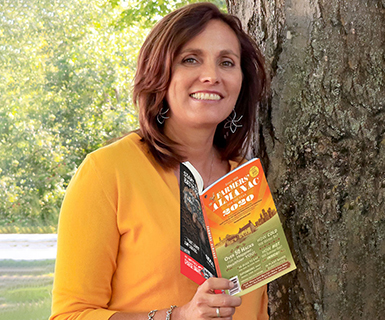BY
RADIO IOWA – The new edition of the Farmers’ Almanac predicts a freezing, frosty winter is ahead for Iowa and the rest of the Midwest.
Sandi Duncan, the publication’s managing editor, says they’re calling for above normal snowfall and below normal temperatures.
Duncan says, “We’re calling this winter a ‘polarcoaster’ winter because we think there’s going to be quite a few thrills and chills up and down the thermometer this winter.”
The Almanac is forecasting what it calls a “memorable” storm that will produce “hefty snows” for the region between January 20th and 23rd, followed by bitter cold as low as 40-below zero. “We’re looking at the coldest outbreak of the season to be at the end of January and the beginning of February,” Duncan says. “Overall, in your region we’re calling for a frigid and snowy winter.”
This past spring was lousy for many farmers in the region, with prolonged cold, wet weather and widespread flooding. The Almanac is predicting essentially a repeat for next spring. “We do see a very slow start to spring once again with chilly, wet conditions hanging on into April,” Duncan says. “The good news is, we also have a summer forecast, and we see scorching temperatures with not the greatest but near-normal precipitation. Hopefully, things will even out a little bit as summer continues to take hold in 2020.”
Meteorologists at the National Weather Service often put little stock in forecasts more than a few weeks out, but Duncan notes the Farmers’ Almanac has been predicting the weather for longer than the National Weather Service. The Almanac’s forecasts extend out from six to 16 months and they’re based on a formula established two centuries ago.
“It was set on a bunch of rules that we’ve altered slightly but we still consider a lot of the rules that our founding editor in 1818, we still follow them,” Duncan says. “They are rules that talk about sunspot activity, tidal action, the Moon, the position of the planets. They apply them to different weather conditions and they’ve been doing a pretty good job for us.” She says those who follow the publication’s long-range outlooks say they’re 80 to 85% accurate.




